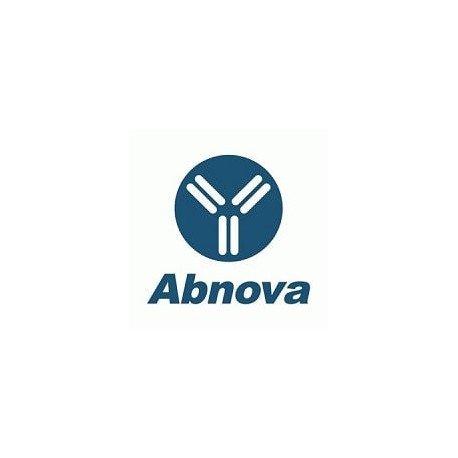Cart 0 Product Products (empty)
No products
To be determined Shipping
0,00 € Total
Prices are tax excluded
Product successfully added to your shopping cart
Quantity
Total
There are 0 items in your cart. There is 1 item in your cart.
Total products (tax excl.)
Total shipping (tax excl.) To be determined
Total (tax excl.)
Data sheet of Ahsa1 monoclonal antibody, clone 25F2.D9
| Brand | Abnova |
| Product type | Primary antibodies |
| Reactivity | Chimpanzee,Human,Mouse |
| Host species | Rat |
| Applications | ELISA,WB-Ce,IHC-P |
More info about Ahsa1 monoclonal antibody, clone 25F2.D9
| Brand: | Abnova |
| Reference: | MAB8169 |
| Product name: | Ahsa1 monoclonal antibody, clone 25F2.D9 |
| Product description: | Rat monoclonal antibody raised against full length recombinant Ahsa1. |
| Clone: | 25F2.D9 |
| Gene id: | 217737 |
| Gene name: | Ahsa1 |
| Gene alias: | BC023857|MGC36589|MGC36618|p38 |
| Gene description: | AHA1, activator of heat shock protein ATPase homolog 1 (yeast) |
| Immunogen: | Recombinant protein corresponding to full length mouse Ahsa1. |
| Form: | Liquid |
| Recommend dilutions: | ELISA (1:20000) Western Blot (1:1000) Immunohistochemistry (5-10 ug/mL) The optimal working dilution should be determined by the end user. |
| Storage buffer: | In 20 mM KH2PO4, 150 mM NaCl, pH 7.2 |
| Storage instruction: | Store at 4°C. For long term storage store at -20°C. Aliquot to avoid repeated freezing and thawing. |
| Product type: | Primary antibodies |
| Host species: | Rat |
| Antigen species / target species: | Mouse |
| Reactivity: | Chimpanzee,Human,Mouse |
| Application image: |  |
| Application image note: | Immunohistochemical staining of Ahsa1 monoclonal antibody, clone 25F2.D9 (Cat # MAB8169) was used at a 5-10 ug/mL to detect Ahsa1 in the seminiferous tubule of human testis (40X) showing moderate staining. Leydig cells showed faint to moderate staining. Expression of Ahsa1 is reported in many epithelial and lymphatic tissues, with cytoplasmic localization. This antibody showed moderate cytoplasmic staining of a variety of epithelial tissues and lymphoid organs such as spleen and tonsil with minimal background staining. The image shows the localization of the antibody as the precipitated red signal, with a hematoxylin purple nuclear counterstain. Tissue was formalin-fixed and paraffin embedded. Personal Communication, Vasiliki Demas, LifeSpanBiosciences, Seattle, WA. |
| Applications: | ELISA,WB-Ce,IHC-P |
| Shipping condition: | Dry Ice |
| Publications: | A novel HSP90 chaperone complex regulates intracellular vesicle transport.Lotz GP, Brychzy A, Heinz S, Obermann WM. J Cell Sci. 2008 Mar 1;121(Pt 5):717-23. Epub 2008 Feb 12. |


